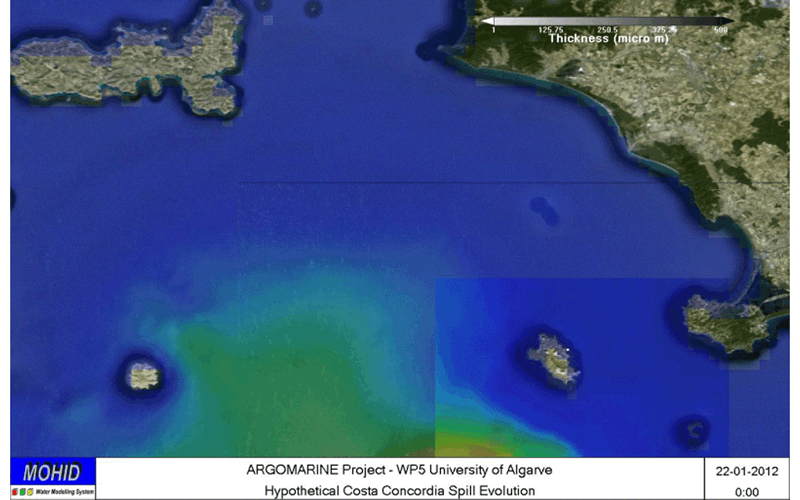Costa Concordia cruise: Oil spill simulation
Centro de Investigação Marinha e Ambiental – Universidade do Algarve, Faro (Portugal)
Disclaimer: this result has to be intended as a scientific research result of ARGOMARINE project. It has NOT to be considered as a result to be used for operational purposes
In the simulations only one scenario is considered. A continuous release of Bunker C Fuel Oil from the Costa Concordia is simulated, at a rate of 0.014 m3/s during two days. It is assumed that all the spilled fuel is at the water surface level.
Due to technical reasons and time constrains the hydrodynamic has been neglected from this simulations, only being considered the wind and waves as the driving forces of the oil advection. The error assumed here is around 15% (the weight of the hydrodynamics in our previous simulations). Nevertheless we are working hard to have the hydrodynamics working as soon as possible.
The forcing files are the daily forecasts of the SKIRON model (for the atmosphere) and CIMA-University of Algarve’s operational wave model (SWAN model).
As it can be noted, oil particles reaching the shore are washed again into the sea instead of suffering beaching or dissapear. This is justified by the rocky-type shore present in Giglio island, but also it was assumed as a cnservative approach when looking at the possible extension of the spill.
The oil weathering processes (evaporation, emusification, etc…) are not active in the simulations. So the particles have the characteristics of the fuel oil, but no weathering processes are acting on them. The reason for this is the increase in computation time needed to simulate the oil weathering processes in this particular case. The computation time wouldn’t be unfeasible to give forecasts. This issue is currently under research activity at the present stage.
Category: News













